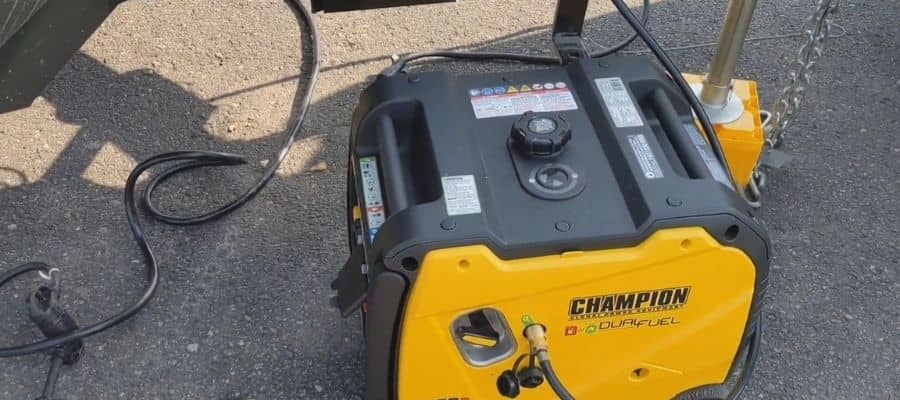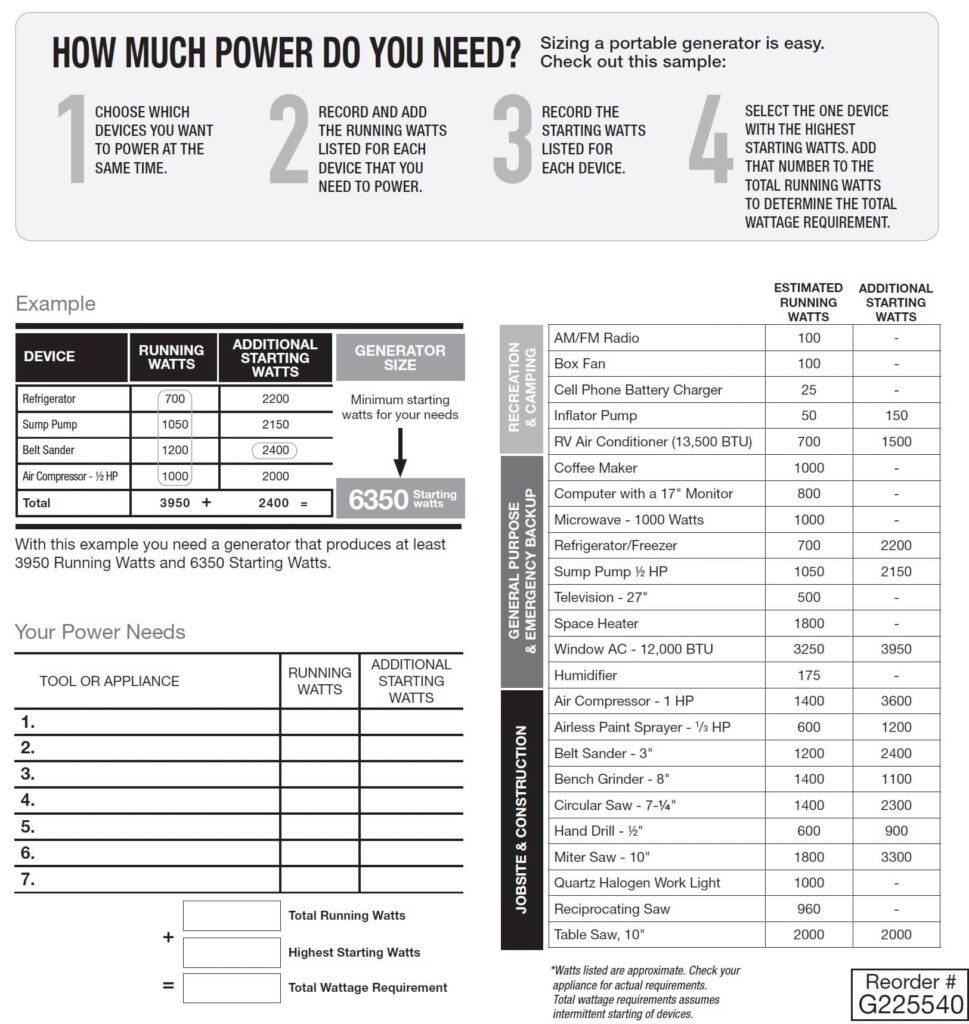
Portable generators with a rating of 3,500 watts are a common type of portable power equipment. A 3,500-watt generator gives many more options than a 2,000-watt generator, but without the significant increase in noise and fuel consumption that bigger generators do. A 3,500-watt inverter generator also gives you clean power.
The question of whether a 3,500-watt generator is the right choice for your power needs? It’s helpful to evaluate what you want to power versus what 3,500 watts of electricity can give to answer that question.
We’ll look at how much watts popular appliances and gadgets demand in this post. We’ll also go through some hypothetical scenarios to help you understand what you can do with a 3,500-watt generator.
Many people think of generators as only a backup for powering their homes in the event of a power outage, but they’re capable of much more. Whether you live in a rural area or a city, having a generator is an essential part of your household toolkit.
It allows you to power devices in your home or at a worksite. It supplies backup power in the event of a power outage. It is also reliable. You can depend on a generator regardless of where you go. We’ll go over everything that you need to understand about generators in this guide, from picking the right one for your power and portability needs to setting up and maintaining your generator for peak performance.
How Many Watts Can a Generator Generate?
When it comes to generator wattages, there are two types of power ratings to be aware of: surge wattage and continuous wattage. Surge wattage is the higher of the two power ratings.
Surge wattage is the maximum amount of electricity that your generator can produce for a brief period of time (usually a few seconds). When using a motor-driven item, such as a refrigerator or air conditioner, this is critical. Surge power is especially important if you want to use your generator to power outdoor equipment such as lawnmowers, chainsaws, and table saws.
Continuous wattage, sometimes referred to as running wattage, refers to the amount of electricity that your generator can produce over an extended period of time. This is the wattage that most appliances and tools display.
Take note that a generator may have a 3,500-watt rating, but it could also mean that it has a lot of power for a short time (surge watts). You’ll need to do your research on a certain generator model to find out what wattages it can handle. Here is a screen shot from appliance wattage chart from lowes.com showing you typical appliance wattage needs and generator power you will need.

Inverter vs. Conventional Generators
It used to be that all 3,500-watt generators had open-frame motors, but now that has changed. Fortunately, 3,500-watt closed frame inverters are now widely available, and they provide a number of benefits over the traditional open-frame form. For starters, you may use them to power sensitive gadgets like a smartphone, computer, or television without risking damage, in addition to your usual home appliances and power equipment.
Inverter generators also allow you to connect two generators in parallel. That means if you purchase two 3,500-watt inverter generators, you can combine them to create a combined total of 7,000 watts of power. To do so, you’ll need two inverter generators of the same model, along with an additional parallel connectivity kit.
How a 3,500W Generator Can Be Used?
let’s look at some frequent uses for on-demand electricity.
RV & Camping
The 3,500-watt generator you need for an RV trip isn’t really much different from the one you’d need at home, so you don’t need to buy new equipment to get started. Most of the appliances you need to run in an RV are much smaller and optimized to use less power than the ones you would run in your house.
For example, air conditioning systems in most RVs use just 1,200 watts while your refrigerator and freezer are running. This means you can operate your refrigerator and freezer concurrently with your air conditioner and lights, and still have enough power for a small electric stove, microwave, or coffee maker.
Blackouts
In most homes, 3,500 watts of power is enough to keep their most important appliances running during a power outage. At the very least, homeowners should power a refrigerator or freezer, and lights which adds up to about 1,000 watts. If they want to be able to use the kitchen, too, they can run a microwave, electric stove, and other small appliances. They have enough power left over to power a laptop and phone charger, as well.
The 3,500 watts of power you have available may not be enough for all of your needs. An air conditioner or furnace may be necessary, depending on the season. In contrast to central heating systems, huge air conditioning units can easily consume more than 2,000 watts of power. A 3,500-watt generator can power a well pump and sump pump.
The generators are most efficient when the load is balanced around the middle, so don’t let the water pump draw too much power if you’re trying to keep the generator running on a tight budget.
So, 3,500 watts is ideal for household use if you just need to power a few modest gadgets. If you require pumps or a huge air conditioning system to run, you’ll need to do some math to see if 3,500 watts is adequate.
Jobsite Uses
Contractors often use 3,500-watt generators at work sites without dedicated power lines. These generators are more than capable of handling the majority of conventional power tools. A circular saw, for example, may function on 1,400 watts (surge watt: 2300 watts) and an air compressor on 1,200 watts. If you have numerous employees working with various equipment at the same time, a 3,500-watt generator might not be adequate.
A good drill press can be used for more than just drilling holes in wood. You can also use it to cut steel, and if you have access to a big enough motor, you can use it for everything from running an air compressor to powering a circular saw. As a result, 3,500-watt generators are ideal for work locations with just two or three employees on site at any given time.
Tailgating
Whether you’re tailgating, hosting a party, or just grilling some snacks on a weekend, the number you need depends on what you’re powering. A large television, laptop, and lights will likely use up around 3,500 watts, so you can power your mini-fridge with the rest of the extra watts if you want.
If you want to power an electric grill instead of a gas grill, that will add another 1,500 to 2,000 watts to your setup. What will you do with the additional 500 or more watts you’ll have left over?
Is 3,500W the Right Size for You?
3,500 watts is a good amount of power for a variety of applications. Even while you may not be able to power everything at once with 3,500 watts, it’s usually enough to run basic appliances and tools.
In the case of an RV or tailgating, 3,500 watts should be more than enough electricity for you. Whether you’re at home or on the job, you’ll want to be sure you don’t exceed the generator’s rated surge power by taking a close look at what you’ll be running.
Read Next:
